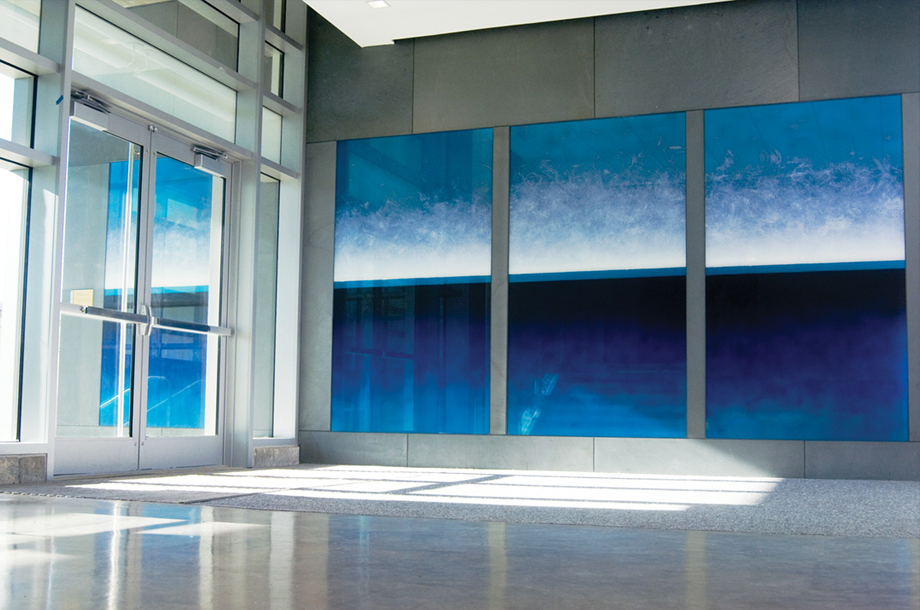Nicole Chesney’s Welkin, a large, four-panel glass work, permanently installed in the Nulman Lewis Student Center at the Wheeler School in Providence, is testament to the fact that no material is able to manipulate light the way glass can.
Chesney, a Providence glass artist, is known for her ephemeral paintings depicting water and sky on mirrored, acid-etched glass. Her works, often assembled from more than one pane, are not literal images of land- or seascapes. Rather, they act as an abstract of a place, intended to suggest a mood. They succeed by conveying the effect of glaring sunlight reflecting off the sea on a hot, steamy summer’s day or suggesting the solid nothingness of dense, wool-like fog hanging heavy in the air.

Chesney’s paintings inspire awe, drawing viewers in and seducing them to linger and relish the serene moment. They provide a place to escape, to lose oneself while savoring the immense silence and solitude. This also holds true for Welkin (which means “the vault of heaven”), completed by Chesney last fall as part of the Wheeler School’s public art initiative. The piece takes full advantage of the reflective qualities of the glass, enlivening the new gateway to the school’s dense campus. Set flush within a bluestone wall, the deep shades of cobalt blue and brilliant turquoise in the glass create the illusion of a panoramic view, complete with a fluffy, white cloud mass; a light blue sky; and a thick, dark horizon. No photograph can reproduce the light radiating from the panels, glowing as if the whole wall is backlit, reminiscent of an illuminated swimming pool at night.
For Chesney, who exhibits her work internationally, Welkin represents a career milestone. Not only is this the largest piece she has ever made (eight by twenty feet), it provided her with the opportunity to experiment with an architectural glazing process-in which printed layers of plastic are laminated between two sheets of glass-in order to generate the image that complements Wheeler’s modern addition.
—Martina Windels
